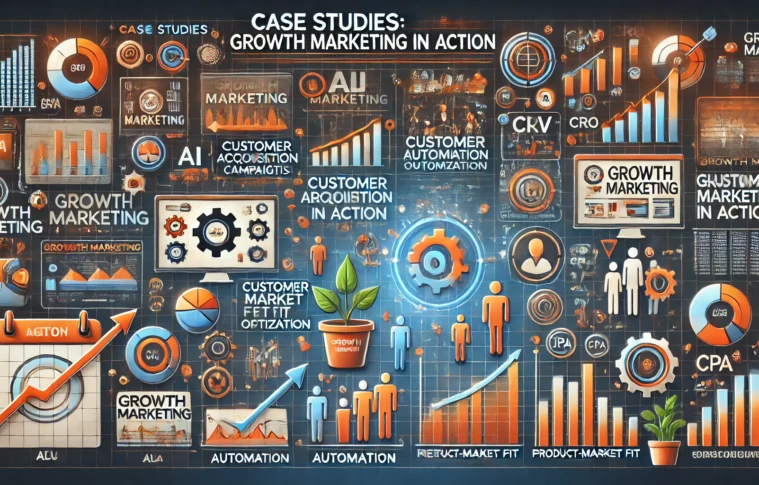Below are real-world examples showcasing how companies have used growth marketing strategies to scale rapidly by aligning data, experimentation, and customer-centric approaches.
1. Dropbox: Referral Program Success
Challenge: Dropbox needed to grow its user base but had a limited marketing budget.
Growth Strategy:
- Referral Marketing: Dropbox launched a referral program, offering free storage to both the referrer and the referee.
- Viral Loops: This created a network effect where new users were incentivized to invite more users, driving organic growth.
Results:
- Increased sign-ups by 60% in 15 months.
- Gained over 4 million users by the end of the program.
Key Takeaway:
A low-cost referral strategy that aligns incentives with user behavior can fuel viral growth.
2. Airbnb: Leveraging Craigslist for Demand Generation
Challenge: Airbnb struggled to build trust and generate bookings on its platform during its early stages.
Growth Strategy:
- Craigslist Integration: Airbnb engineered a way for hosts to post their listings directly on Craigslist, a popular platform at the time.
- This scrappy growth hack drove early traffic and demand, bringing in renters who were not initially aware of Airbnb.
Results:
- Rapid user growth in new markets.
- Scaled to become the preferred travel accommodation platform globally.
Key Takeaway:
Leveraging existing platforms through growth hacks can kick-start traction when launching in competitive markets.
3. HubSpot: Scaling with Free Tools and Content Marketing
Challenge: HubSpot needed to establish itself as a leader in the inbound marketing software space.
Growth Strategy:
- Free Tools: HubSpot offered free tools like email signature generators and website graders to draw traffic.
- Content Marketing: It created blogs, eBooks, and webinars, optimized for SEO, to build an audience and nurture leads.
- Freemium Model: Users started with free tools and later converted to paid customers through upsells.
Results:
- Gained over 48,000 customers in the early years.
- Became one of the largest SaaS companies in the marketing space, driving growth with content and SEO strategies.
Key Takeaway:
Providing free value with tools and resources creates brand trust and draws potential customers into the product ecosystem.
4. PayPal: Rapid User Growth with Incentivized Onboarding
Challenge: PayPal needed to acquire new users quickly to become the default payment option across platforms.
Growth Strategy:
- Cash Incentives: PayPal offered $10 to new users and $10 to the referrer when someone signed up.
- Strategic Partnerships: Partnered with eBay to integrate PayPal as a preferred payment method, boosting visibility and usage.
Results:
- Acquired 1 million users within the first months.
- Eventually scaled to become one of the most widely used payment gateways worldwide.
Key Takeaway:
Incentivized onboarding and partnerships can provide a quick boost to user acquisition, especially for fintech products.
5. Slack: Building a Product-led Growth Model
Challenge: Slack needed to break into the crowded business communication software market.
Growth Strategy:
- Product-led Growth (PLG): Slack focused on delivering a seamless onboarding experience, where users could see value without requiring heavy demos or sales interventions.
- Viral Loops through Collaboration: As teams started using Slack, they naturally invited more teammates, creating organic, exponential growth.
- Freemium Model: Users started with free plans and were encouraged to upgrade for additional features.
Results:
- Gained over 8 million daily users in just a few years.
- Achieved a $27.7 billion valuation after acquisition by Salesforce.
Key Takeaway:
A product-led approach that focuses on making the product easy to adopt and use can generate organic, exponential growth.
6. TikTok: Hyper-Targeted Content & Influencer Marketing
Challenge: TikTok needed to establish itself in a competitive social media space dominated by platforms like Instagram and Facebook.
Growth Strategy:
- Algorithm-Driven Personalization: TikTok’s “For You” page curates highly targeted content, leading to addictive usage and better engagement.
- Influencer Marketing: TikTok partnered with influencers and celebrities to attract users.
- Localized Content: It focused on local trends and challenges to connect with niche markets globally.
Results:
- Over 1 billion monthly active users within five years.
- Became one of the fastest-growing social media platforms in the world.
Key Takeaway:
Personalized algorithms and influencer collaborations drive rapid engagement and user adoption in social media platforms.
Conclusion: Core Principles from Case Studies
- Referral Programs & Incentives (Dropbox, PayPal)
→ Incentives aligned with user behavior drive rapid growth.
- Platform Leveraging & Growth Hacking (Airbnb)
→ Using existing platforms helps startups find early customers without huge marketing budgets.
- Content & Product-led Growth Models (HubSpot, Slack)
→ Free tools and seamless onboarding create trust, leading to organic growth.
- Personalization & Engagement Loops (TikTok)
→ Curated, localized content can boost engagement and create loyal communities.
These case studies illustrate that customer-centricity, experimentation, and agility are essential to building and sustaining growth marketing success. Each company tailored its growth strategy to fit its product, market, and customers—something every company should aim to replicate.
Disclaimer
Posts in the Notebook are written by individual members and reflect personal insights or opinions. Please verify any information independently. If you have any concerns, notify the admin immediately so we can take action before any legal steps are taken.





